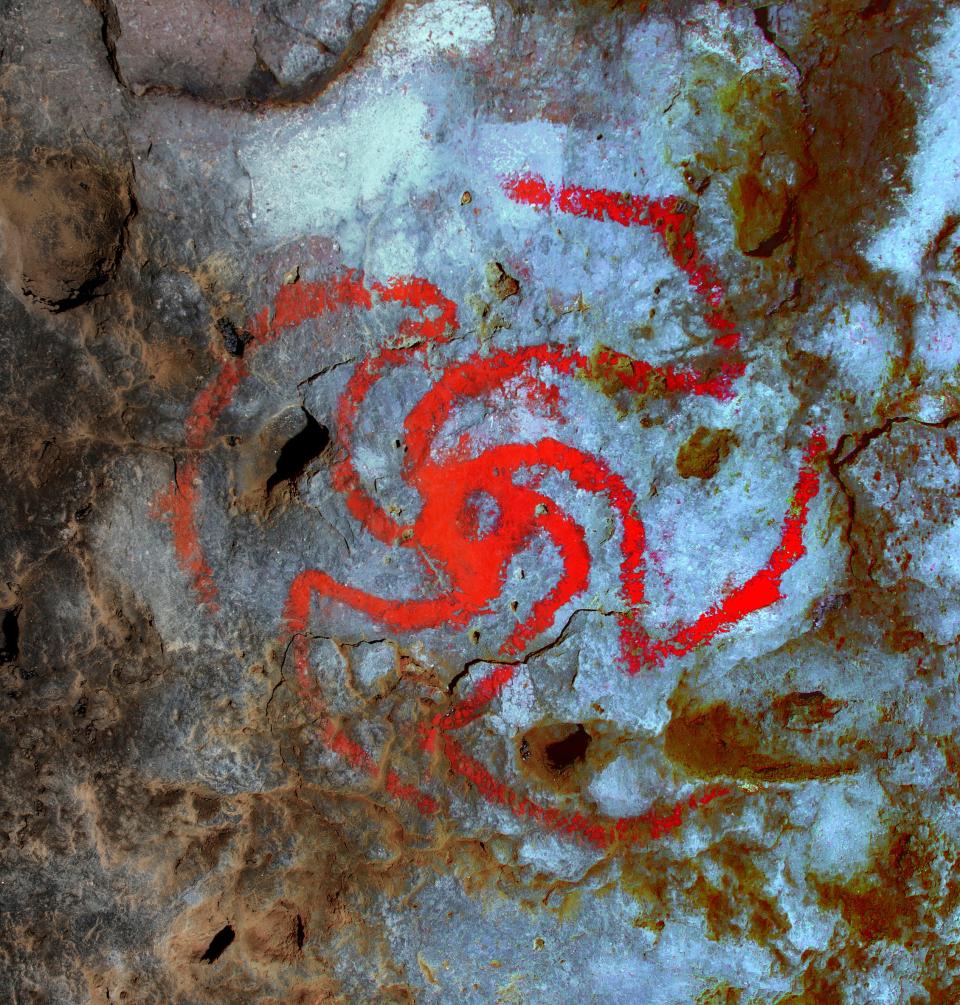Stoned Age: Native American art confirms hallucinogenic drug use

For the first time, scientists have confirmed that Native Americans used a hallucinogenic drug while painting rock art, according to a new study.
The study concluded that Native Americans, likely of the Chumash tribe, consumed the hallucinogenic plant Datura wrightii hundreds of years ago at a rock art site in Pinwheel Cave in California – and that the art they painted is likely a representation of that plant.
This is a world first, said study lead author David W. Robinson, an archaeologist at the University of Central Lancashire in the U.K.: "There is evidence of hallucinogens being depicted in rock art, and evidence of hallucinogenic plants growing at rock art sites, but to my knowledge, no clear evidence of the actual preparation and consumption of a hallucinogen at a rock art site has been reported anywhere in the world."
Robinson and his co-authors analyzed fibrous bundles called quids, which were found in the ceiling of the cave, located south of Bakersfield.
Because a pinwheel-like design painted on the cave resembles the sacred perennial flower Datura wrightii, which was used by Native Californians to induce trance states, the scientists explored whether the quids might have contained that flower.
Three-dimensional analysis of the quids suggested that they had been chewed, potentially inside the cave and under the paintings, according to the study. Further analysis revealed the presence of hallucinogenic compounds in the quids, and scanning electron microscopy confirmed that the fibers in the quids came from Datura.
"Because the art represents Datura, the art was most likely made when the quids were used," Robinson told USA TODAY.
The exact date when the painting was made cannot be determined, he said. "We don't know precisely when the art was painted. To do so would require taking a sample from the artwork which would destroy some of it, and even then we wouldn't know for sure if it would produce a date, so we have not attempted that."
According to Robinson, "the evidence at Pinwheel Cave shows that the hallucinogens were taken in a group context and that the art communicated the ecology of the plant behind the trance rather than the images seen during the trance.
"Rather than being private retreats of male shamans to the exclusion of everyone else, the rock art site is a deeply meaningful place of inclusivity for the entire community," he said.
The study was published Monday in the peer-reviewed journal Proceedings of the National Academy of Sciences.
This article originally appeared on USA TODAY: Pinwheel cave: Native American art confirms hallucinogenic drug use

 money
money 